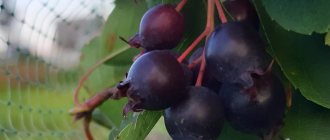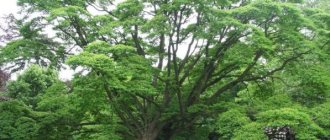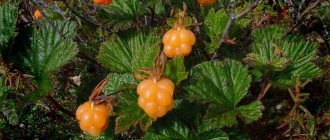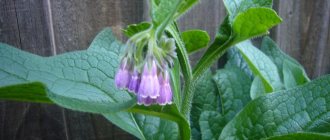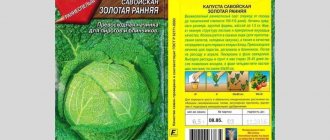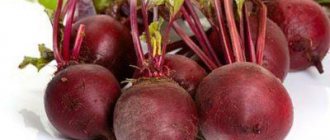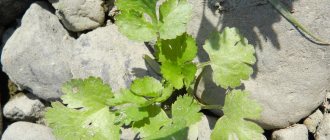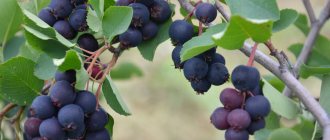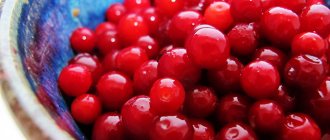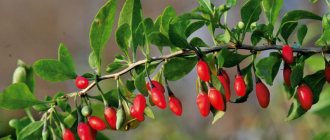Among the many types of fruit trees and shrubs, garden serviceberry (Amelanchier) or currant deserves special attention, which combines decorative and fruit qualities, and is famous for its unpretentiousness in care, exceptional winter hardiness and resistance to pests and diseases.
The genus of the crop includes about 25 species of large shrubs or low deciduous trees, most of which come from North America. In nature, the plant easily hybridizes, and members of the genus are very similar in appearance to each other.
The crop belongs to the Rosaceae family and is a close relative of apple, pear and hawthorn. The Latin name comes from the French "amelanche", which means "small apple".
In Europe and America, currant is called the June berry. Several species have become widespread as ornamental fruit plants in garden culture.
Features of the plant
In gardens, vegetable gardens and city parks you can often find shrubs with beautiful reddish-purple beaded berries - shadberry. This plant belongs to the Rosaceae family. In Latin, its name sounds like “Amelanchier” - amelanchier. The plant can grow and bear fruit for several decades.
Botanists know 19 species of serviceberry, but not all varieties are capable of producing a stable harvest in our area. In Russia, the most common is the round-leaved serviceberry. Description of the plant and pictures will make it easy to recognize it in nature:
- grows in the form of a low, up to 4 meters, tree or multi-standard shrub;
- the shoots are thin, the bark is brown-red;
- Saskatoon has a high growth rate; during the summer, shoots can grow half a meter;
- leaves are simple, located on petioles;
- the leaf blade on top has a dark green tint, the back side is lighter;
- young leaves are covered with a gray coating;
- old leaves are pubescent on the underside along the central vein;
- The plant blooms with white flowers with a pleasant subtle aroma;
- serviceberry flowers are collected in simple inflorescences - brushes, flowering resembles bird cherry;
- The root system of the plant is well developed, superficial, due to which the shrub can reproduce by root shoots.
Note: in autumn, the shadberry bush looks very decorative, as its leaves are painted in different shades: yellow, pinkish-red, burgundy.
The name “irga” comes from the Proto-Slavic prefix “irg”, which denoted something unknown, foreign. For some time, Irgu was considered an overseas berry, since it was brought to Siberia from North America. Another common name for the plant in Siberia is yurga.
In addition to the round-leaved one, the Canadian shadberry is also found in our area; its beneficial properties are similar, but the appearance of the plants is different. Canadian serviceberry is a taller tree, capable of growing up to 10 meters in height. Its branches are drooping, the leaves are dark green, ovate, heart-shaped at the base, the edge of the leaf blade is serrated. Young leaves are drooping and become smooth over time. Below you can see a photo of the bush during the flowering and fruit ripening period.
Where does the irga grow?
Irga has been cultivated in European countries as a fruit crop since the 16th century. It can be found in Germany, England, Italy, Holland. Ornamental varieties of serviceberry are grown in gardens and parks and can become a beautiful addition to the landscape.
In our country, we learned about shadberry in the 19th century. This unpretentious plant grows well in our climate and produces high yields. The famous biologist Ivan Michurin made a lot of efforts to ensure that the serviceberry took root in our area. He planted the plant in different regions of the country. Birds helped the biologist spread the shadberry everywhere; the birds happily feast on the sweet berries, carrying their seeds over long distances.
In the wild, shadberry most often chooses sun-drenched mountain slopes, forest edges and clearings, but in general it is unpretentious to growing conditions and resistant to low temperatures. Due to its frost resistance in Russia, it is actively grown in Siberia. Among the countries where serviceberry grows as a fruit crop, it is also worth highlighting the USA and Canada.
Care and pruning
Maintenance is not difficult. In fact, the serviceberry grows on its own; it needs to be watered occasionally and fed with nitrogen fertilizers, which can be bought at any gardening store. However, in order to get a beautiful bush shape, it needs pruning.
Wineberry bushes do not require frequent watering
How to trim?
The wine berry looks most beautiful as a multi-stemmed bush, so you need to remove all weak shoots. Each individual should have a dozen or two branches of different ages.
Advice! If there is a weakening of growth, the shadberry requires rejuvenating cropping - most of the perennial wood is removed every three years.
Canadian serviceberry can reach a height of 12-18 meters
Beautiful landscape design of a suburban area
Advice! In addition to removing excess “young growth” at the roots, the growth is also corrected: the serviceberry is cut at a height of 2.5 m.
What do serviceberry berries look like?
Sometimes currants are mistaken for blueberries or blueberries, since the serviceberry looks like their close relative. The similarity can be found if we consider a fully ripe serviceberry berry outside the bush. Seeing berries on a bush branch, it becomes obvious that the plants do not have many similarities.
The fruits of the serviceberry are round, about 1 centimeter in diameter. The average weight of one berry is 0.35 g. They resemble tiny apples in shape. The fruits are collected in clusters, and the upper berries on the cluster ripen before the lower ones. Ripe serviceberry berries are dark purple in color, while unripe ones are pink-red. The top skin of the berry is covered with a waxy coating.
The serviceberry has a fairly thick skin, under which there is dense, low-juicy pulp. When you bite into a berry, you can find seeds inside it. They are soft, do not crunch when chewed, and have an unusual taste. There is no need to spit them out; you can eat the berries directly with the seeds.
What do berries taste like?
The serviceberry berry has a rich, sweet, even cloying taste. Some compare it to honey, others to raisins. The taste of the berries is so distinctly sweet that it makes no sense to additionally sweeten them with sugar when consumed fresh.
It is difficult to compare the taste of shadberry with any other famous berry or fruit. To some, it vaguely resembles blueberries, while others detect nutty notes in it.
Note: ripe shadberry colors the tongue a little. If its juice gets on the skin of your hands during harvesting, it can also become colored.
Compound
Serviceberry fruits, depending on ripeness, contain from 8 to 12% sugars. They contain organic acids, the content of which can vary from 0.4 to 0.9%. Due to the low concentration of organic acids, berries can be included in the diet of people with high stomach acidity. Their use does not cause any discomfort.
Useful properties of serviceberry berries
The vitamins and microelements present in serviceberry berries are necessary for the human body at any age. Thanks to their content, berries are so beneficial for health:
- vitamin A - takes part in the growth of new cells, stimulates collagen synthesis, promotes the restoration of epithelial tissues, improves night vision, prevents the development of blindness;
- vitamin C – strengthens the body’s immune defense, helps to recover faster from colds and various infectious diseases, regulates redox processes in the body, improves the absorption of iron and calcium;
- vitamin B2 – participates in the formation of red blood cells and antibodies, ensures cellular respiration, is necessary for metabolism and energy generation in the body;
- copper – increases the efficiency of vitamin C absorption, ensures normal blood clotting, the synthesis of neurotransmitters and the synthesis of thyroid hormones;
- iron – improves the transport of oxygen to tissues, is part of many enzymes necessary for metabolism in the body;
- manganese – regulates blood glucose levels, normalizes the functioning of the brain and nervous system, activates the process of cell division, and is necessary for the functioning of the pancreas;
- iodine – necessary for the synthesis of thyroid hormones, which ensure normal metabolism, energy metabolism, water balance, and proper functioning of the endocrine and digestive glands;
- cobalt – is part of vitamin B 12, is necessary for DNA synthesis, protein, carbohydrate and fat metabolism, stimulates the growth and development of red blood cells.
Irga has numerous beneficial properties due to the active substances it contains:
- bioflavonoids are strong antioxidants, in combination with vitamin C, protect the body from free radicals, prevent the development of cancer, strengthen capillary walls, lower blood pressure, and help eliminate allergies;
- tannins – have an astringent effect in the intestines, promote the removal of waste and toxins, fight bacteria, and prevent the development of internal bleeding;
- anthocyanins – have the ability to resist ultraviolet radiation, reduce the risk of developing cancer, slow down the aging process, and contribute to the normal functioning of the nervous system;
- organic acids – regulate the acid-base balance of the body, improve the functioning of the digestive system, have a beneficial effect on the condition of the skin, nails and hair;
- pectins – improve intestinal function, promote regular cleansing, and normalize stool;
- sterols - participate in the production of healthy fats necessary for healthy skin and blood vessels; most of them are found in the skin of berries.
Benefits for men
Including shadberry in the diet is especially beneficial for men over 50 years of age. At this age, the likelihood of developing diseases of the genitourinary system associated with thinning of the walls of blood vessels, weakened immunity, and stress increases. Consumption of irgi has a beneficial effect on the condition of blood vessels, increases the body's immune defense, and improves the functioning of the nervous system.
The tasty berry will prevent the development of diseases of the cardiovascular system, which affect men after the age of 50. Berries are useful to eat to maintain heart function, prevent strokes and heart attacks.
The high content of vitamin C and other beneficial substances makes irgu an effective remedy for vitamin deficiency. Men often eat an unbalanced diet, neglect preventative vitamin supplements, and increased physical activity and frequent stress require maximum strength from the body. Irga will provide the body with the vitamins and microelements it needs.
Benefits for women
The usefulness of serviceberry for women is due to the antioxidants, bioflavonoids and pectins it contains. Irga will help maintain the beauty of the body from the inside. It will ensure healthy skin, strengthen hair and nails. Due to the ability of berries to remove toxins and waste from the body, with regular consumption of serviceberry, a woman will quickly notice positive changes.
It is useful for women to eat shadberry during menstruation and menopause. Irga has the ability to reduce spasms, improve hormonal levels, reduce irritability, and calm the nervous system.
Benefits for pregnant women
Irga can become not only a tasty snack and a source of vitamins for a pregnant woman, but also a natural medicine that is effective for many diseases:
- fresh berries boost immunity and help avoid colds;
- jam from serviceberry has a diaphoretic effect and helps normalize body temperature during fever;
- Thanks to the tannins in the berries and leaves, infusions and decoctions of them are used as a remedy for diarrhea;
- fresh berries strengthen the walls of blood vessels, which helps prevent varicose veins during pregnancy;
What are the benefits of leaves, bark and flowers?
All parts of the plant have healing properties for the human body. And if berries are more often considered as a food product, then the bark, flowers and leaves of serviceberry are widely used in folk medicine for their beneficial properties.
The leaves contain active flavonoids, tannins, and stearins. They have a general strengthening, tonic, wound-healing, astringent and hypotensive effect. When used externally, decoctions and infusions of irgi leaves have a bactericidal and anti-inflammatory effect.
The bark as a medicinal raw material is harvested in late spring. It is collected, dried and stored in fabric bags. The bark has a pronounced astringent effect due to its high tannin content. Decoctions and infusions are prepared from the bark, which are useful to take for gastrointestinal diseases and stool disorders.
Note: the bark and leaves of serviceberry are often used in combination. Healing decoctions and infusions are prepared from them.
Serviceberry flowers are collected during the bush's flowering season. They are dried in the open air, in a place protected from sunlight. Flowers have a calming, mild sedative effect. They are used to make tea. This drink has a pleasant, subtle taste; drinking it helps improve your mood, relieve tension, and prevent depression.
Use of the plant in folk medicine: recipes for decoctions and infusions
Irga is a natural multivitamin. It is used for the treatment and prevention of atherosclerosis, vitamin deficiency, diseases of the cardiovascular system and digestive tract. Due to the high content of bioflavonoids, shadberry and its juice are recommended to be included in the diet of older people to prevent heart attacks and normalize sleep.
Serviceberry juice has an astringent and anti-inflammatory effect; it is used for gastrointestinal diseases, colitis, and enterocolitis. These properties of serviceberry juice are used to treat bleeding gums. They rinse the mouth with it.
Knowing how irga is useful for human health, folk healers have found dozens of uses for it. Irga is used as a means of preventing and treating various diseases. Traditional medicine recipes are based on the use of not only dried fruits, but also leaves, bark and flowers of the plant.
To normalize blood pressure in case of hypertension, to improve vision and eliminate intestinal diseases, an infusion of fresh serviceberry berries is prepared:
- a handful of ripe berries are washed and crushed into puree with a fork;
- berry puree is poured with a glass of boiling water;
- the product is infused for an hour, then filtered;
- drink half a glass of infusion twice a day.
For bleeding, heart disease and to strengthen blood vessels, prepare a decoction of berries:
- 2 cups of fresh fruits are poured with 2 cups of boiling water;
- put the broth on the stove, let it boil and simmer for 5 - 7 minutes over low heat;
- then the broth is filtered and cooled;
- Take 2 tablespoons three times a day.
For diseases of the gastrointestinal tract, prepare a decoction of serviceberry bark:
- 1 tablespoon of crushed bark is poured into a glass of boiling water;
- Place the broth on the stove and simmer over low heat for about 15 minutes;
- the finished broth is left to infuse, then filtered;
- It is recommended to drink it before each meal (4 times a day) a quarter glass.
For external use for treating wounds, abrasions, and rinsing the mouth, an infusion of serviceberry leaves is prepared. 2 tablespoons of dry crushed leaves are poured with 2 cups of boiling water and left for 2 - 3 hours to infuse. You can use a thermos for convenience. After straining, the infusion is ready for use.
Nuances of using berries
Healing infusions can be prepared from both fresh and dried fruits. Therefore, you can harvest raw materials for future use by drying them in the shade. An infusion of berries is prepared from one tablespoon of berries and a glass of boiling water. The mixture is infused for about half an hour and then drunk. The infusion is great for stomach upsets.
Edible serviceberry bushes are an excellent solution for arranging a garden. The plant will perform several functions at once (decorative and practical), producing an abundance of tasty and healthy fruits.
Irga in cooking
The sweet taste of the berries explains the nationwide love for shadberry. It’s best to eat the fruit straight from the branch. Moreover, not only fresh and well-ripened berries are tasty, but also fruits that have dried on the bush. In addition to eating fresh and dried shadberry, delicious dishes are prepared from it. The most popular are jam, compotes, and marshmallows. Serviceberry juice is used as an independent drink and as a base for making syrups.
Of course, fresh berries will be the healthiest. Heat-treated dishes from serviceberry lose the beneficial properties of the berries. When deciding to prepare compote or jam for the winter, you should keep this in mind. But when frozen, many of the beneficial substances in the fruit are preserved. Vitamin B2, A and C remain in the berries almost completely. During drying, these vitamins are partially destroyed, however, their content remains quite high.
Description of the shrub Iga
This bush can be considered a “newbie” on the territory of domestic summer cottages, but despite this, it is loved by gardeners. The tree grows quickly and has several trunks, is resistant to winter cold, unpretentious to conditions, is not susceptible to disease and has a bountiful harvest.
The shrub has oblong, oval, dark green leaves, which turn purple-orange in the fall and look especially decorative, and brown-gray bark. It blooms with white flowers, which are arranged in inflorescences in the form of brushes. The berries have a sweetish taste, are juicy, dark blue in color, and are arranged in up to 12 pieces on one cluster.
Flowering occurs in April-May, which makes the shrub very attractive at this time. During this period, it is not afraid of frosts that occur in the spring, and in winter the bush can withstand frosts down to -30 °C without additional hilling.
Possible harm and contraindications to eating berries
Irga has numerous beneficial properties, but the berries also have contraindications. These include:
- allergy;
- individual intolerance to the product;
- children under 5 years of age (in the presence of diathesis);
- hypotension;
- diarrhea.
Excessive consumption of irgi can lead to stool upset, as it has a laxative effect. It manifests itself especially strongly if you combine shadberry with milk. Due to the ability of irgi to lower blood pressure, it is not recommended for hypotensive people to eat it. This can make a person feel worse.
Despite the enormous benefits of berries, they can also cause harm to health. Therefore, you should not abuse the product, eat handfuls of berries without a sense of proportion. It is very important to choose quality fruits. You should not pick berries from bushes growing along roads, as they are capable of accumulating harmful substances from exhaust gases and emissions. For the same reason, it is not recommended to buy shadberry in spontaneous markets from unverified sellers. It is not known where and how these berries were collected and how beneficial they will be for health.
Features of growing irgi
Planting and caring for irga is not burdensome. This is one of the qualities of the plant for which gardeners love it so much. But it’s worth knowing a few important nuances.
The plant is self-fertile, that is, for abundant fruiting it does not require cross-pollination with a nearby shadberry bush. But more often, gardeners plant 2 - 3 shrubs on the site. This improves the quality of the crop.
The plant reproduces in several ways:
- seeds;
- cuttings;
- vaccination;
- layering.
When planting by seed, the seeds extracted from the berries are dried and sown in the ground. In the spring, seedlings appear that can be transplanted to a permanent place after 3 years.
It is better to plant cuttings in the garden in the fall, as they develop better than when planted in the spring. Choose a sunny place, protected from strong winds. The plant loves fertile sandy loam soils or loam. Before planting, potassium-phosphorus fertilizers are applied to the soil.
Advice: when choosing a place to plant a shrub, you should take into account that berry juice leaves traces that are difficult to remove. Therefore, you need to plant shrubs away from the car parking area, the walls of the house, and paths with light tiles.
Subsequent care of the plant consists of periodic watering and application of nitrogen fertilizers. If the plant is planted as an ornamental, its crown must be shaped by regular pruning. Once every 3 years, it is recommended to remove old branches to rejuvenate the bush.
We have already mentioned that birds really like sweet berries. Gardeners should be prepared for this and learn how to protect serviceberry bushes from birds. Various repellers and homemade devices solve the problem for 2–3 days, after which the bushes again suffer damage. The surest way to protect the crop is to throw a fine mesh net over the bush.
When and how to harvest
Irga is one of the first to ripen in the garden. Already in mid-June, you can pick ripe dark purple berries. It is believed that serviceberry needs about 100 frost-free days to flower, form the ovary and ripen the fruit.
Note: when currants ripen depends on the type of plant and what the weather was like in the spring months. If spring was early and warm, already in early June you can enjoy the first fruits.
Irga is a berry with uneven ripening. If there are, say, 10 berries on a bunch, first 2 - 3 of them will ripen, after a couple of days the next 2 and so on until the lowest berry on the bunch. Therefore, the harvest has to be done manually, spending a lot of time selecting ripe fruits.
They pick the berries with their hands, simply by pulling them. The dense skin protects the pulp from damage and ensures good transport tolerance of the fruit.
Shallow buckets or plastic containers can be used for collection. It is still not a good idea to pour the fruits into containers in too thick a layer, since the lower berries may become wrinkled under their weight.
Interestingly, the berries continue to ripen even after being picked from the bush. After 2 - 3 days, the reddish fruits will become darker and sweeter. Berries can be stored for 5 days after picking. To preserve them longer, they are dried, frozen or preserved for the winter, for example, by boiling serviceberry compote or making jam.
Caring for the serviceberry tree
For healthy and proper growth of the tree, it is pruned annually. The first pruning is carried out no earlier than two years after planting the tree. During this time, the seedling should take root well and gain strength. Circumcision is carried out in the fall after the end of the growing season. The circumcision process is carried out in several stages:
- If the serviceberry variety is small, then the branches of the bush are pruned to a height of no more than 2-2.5 meters.
- Remove dry and dead tree branches.
- Curved branches that stand out from the general appearance of the shrub are trimmed.
If the bush begins to be affected by gray rot, the tree must be treated with copper sulfate or beard liquid.
General tree care is simple. It is important not to forget about rare watering of the bush, weeding the soil and eliminating weeds near the tree. The wine tree is drought-resistant, so watering is done only during prolonged drought. Watering is carried out in the evening; be sure to avoid watering the tree in direct sunlight.
For better growth and increased yield, you can fertilize the bush when it is 4-5 years old. Gardeners often feed shadberry with humus and chicken droppings.
The shrub serviceberry is a very unpretentious tree. If your garden does not yet have such beauty, be sure to pay attention to this shrub. In addition to aesthetic pleasure, you will receive a rich harvest and will be able to improve the health and immunity of all family members.
6
( 8 ratings, average: 4.13 out of 5)
Back
Mock orange (jasmine bush) - varieties and types
MORE
